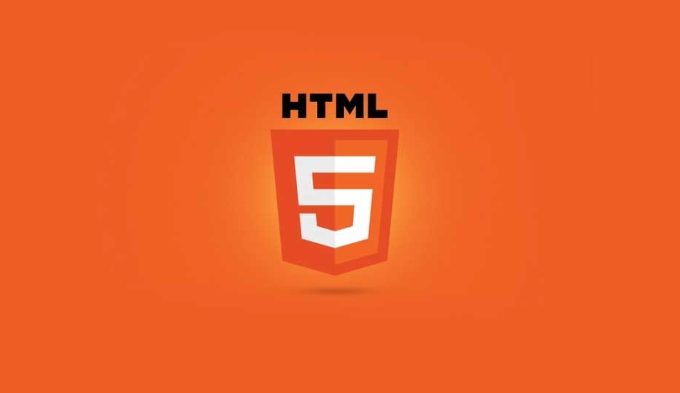Providing suggestions for form inputs with the HTML5 `` element.
Jul 09, 2025 am 02:01 AMUsing the HTML5 <datalist> element can effectively improve the form input experience. 1. The basic usage is to bind <input> to <datalist> through the list attribute, for example, set the list value of the input box and the id of the datalist; 2. It not only supports text input, but also applies to types such as numbers, colors, etc., but some types such as colors may not display a suggestion list in the browser; 3. You can dynamically fill options in JavaScript to load data from arrays or interfaces, and combine input events to achieve real-time search suggestions; 4. In terms of style, the main control of the appearance of the input box, the style of the drop-down list is limited, and you need to pay attention to the compatibility issues between the mobile and old browsers, and the server still needs to perform verification and fault tolerance.

Using the HTML5 <datalist></datalist> element to add suggestions to the form input box is a practical and troublesome method. It allows users to see drop-down prompts when entering, improving the experience while reducing input errors.
 ` element." />
` element." /> 1. Basic usage: bind <input> and <datalist></datalist>
To use <datalist></datalist> , the key is to associate the input box with the data list through list property. For example:
<input type="text" list="fruits"> <datalist id="fruits"> <option value="Apple"> <option value="Banana"> <option value="Cherry"> <option value="Orange"> </datalist>
This way, when the user starts typing in the input box, the browser will automatically match and display a list of suggestions. Note that list attribute value of <input> must be the same as id of <datalist> .
 ` element." />
` element." />2. Supports multiple input types, not just text
Although <datalist> is most commonly found in text input ( type="text" ), it also supports other types of inputs, such as numbers, colors, ranges, etc. For example, the following example is used in combination with digital input:
<input type="number" list="years" /> <datalist id="years"> <option value="2020"> <option value="2021"> <option value="2022"> <option value="2023"> <option value="2024"> </datalist>
This way, users can have both the freedom to enter manually and the recommended value when selecting a year.
 ` element." />
` element." /> It should be noted that although input types like type="color" can be bound to datalist, the browser may not display a list of suggestions, depending on the browser's support.
3. Dynamic filling content is more flexible
If your data volume is large or needs dynamic change, you can use JavaScript to populate <datalist> . For example, generate options from array:
<input type="text" list="cities" />
<datalist id="cities"></datalist>
<script>
const cities = ['Beijing', 'Shanghai', 'Guangzhou', 'Shenzhen'];
const dataList = document.getElementById('cities');
cities.forEach(city => {
const option = document.createElement('option');
option.value = city;
dataList.appendChild(option);
});
</script>This method is suitable for dynamic loading after obtaining data from the interface, and can also filter suggested content in real time based on user input.
- If you plan to search for the association function, you can listen to the input event and update the datalist in the callback.
- Be careful not to operate the DOM frequently, you can consider anti-shake optimization performance.
4. Style and compatibility tips
-
<datalist></datalist>is a native element with limited style control. You can style<input>, but the drop-down list itself is difficult to deeply customize. - Most modern browsers support
<datalist></datalist>, but the behavior may be inconsistent on mobile or older browsers. If stronger controls are required, third-party components may be considered. - Users can choose not to choose among the suggestions, so the server still needs to do a good job of verification and fault tolerance.
Basically that's it. It is not complicated to use <datalist></datalist> well, but it can significantly improve the interactive experience.
The above is the detailed content of Providing suggestions for form inputs with the HTML5 `` element.. For more information, please follow other related articles on the PHP Chinese website!

Hot AI Tools

Undress AI Tool
Undress images for free

Undresser.AI Undress
AI-powered app for creating realistic nude photos

AI Clothes Remover
Online AI tool for removing clothes from photos.

Clothoff.io
AI clothes remover

Video Face Swap
Swap faces in any video effortlessly with our completely free AI face swap tool!

Hot Article

Hot Tools

Notepad++7.3.1
Easy-to-use and free code editor

SublimeText3 Chinese version
Chinese version, very easy to use

Zend Studio 13.0.1
Powerful PHP integrated development environment

Dreamweaver CS6
Visual web development tools

SublimeText3 Mac version
God-level code editing software (SublimeText3)

Hot Topics
 What is Microdata? HTML5 Explained
Jun 10, 2025 am 12:09 AM
What is Microdata? HTML5 Explained
Jun 10, 2025 am 12:09 AM
MicrodataenhancesSEOandcontentdisplayinsearchresultsbyembeddingstructureddataintoHTML.1)Useitemscope,itemtype,anditempropattributestoaddsemanticmeaning.2)ApplyMicrodatatokeycontentlikebooksorproductsforrichsnippets.3)BalanceusagetoavoidclutteringHTML
 Microdata in HTML5: The Key to Better Search Engine Ranking
Jun 12, 2025 am 10:22 AM
Microdata in HTML5: The Key to Better Search Engine Ranking
Jun 12, 2025 am 10:22 AM
MicrodatasignificantlyimprovesSEObyenhancingsearchengineunderstandingandrankingofwebpages.1)ItaddssemanticmeaningtoHTML,aidingbetterindexing.2)Itenablesrichsnippets,increasingclick-throughrates.3)UsecorrectSchema.orgvocabularyandkeepitupdated.4)Valid
 Handling reconnections and errors with HTML5 Server-Sent Events.
Jul 03, 2025 am 02:28 AM
Handling reconnections and errors with HTML5 Server-Sent Events.
Jul 03, 2025 am 02:28 AM
When using HTML5SSE, the methods to deal with reconnection and errors include: 1. Understand the default reconnection mechanism. EventSource retrys 3 seconds after the connection is interrupted by default. You can customize the interval through the retry field; 2. Listen to the error event to deal with connection failure or parsing errors, distinguish error types and execute corresponding logic, such as network problems relying on automatic reconnection, server errors manually delay reconnection, and authentication failure refresh token; 3. Actively control the reconnection logic, such as manually closing and rebuilding the connection, setting the maximum number of retry times, combining navigator.onLine to judge network status to optimize the retry strategy. These measures can improve application stability and user experience.
 What are the key features introduced in HTML5?
Jun 19, 2025 pm 11:57 PM
What are the key features introduced in HTML5?
Jun 19, 2025 pm 11:57 PM
HTML5introducedkeyfeaturesthattransformedwebdevelopment.1.Semanticelementslike,,andimprovedstructure,readability,andaccessibility.2.Nativemultimediasupportviaandtagseliminatedrelianceonplugins.3.Enhancedformcontrolsincludingtype="email"andr
 Integrating CSS and JavaScript effectively with HTML5 structure.
Jul 12, 2025 am 03:01 AM
Integrating CSS and JavaScript effectively with HTML5 structure.
Jul 12, 2025 am 03:01 AM
HTML5, CSS and JavaScript should be efficiently combined with semantic tags, reasonable loading order and decoupling design. 1. Use HTML5 semantic tags, such as improving structural clarity and maintainability, which is conducive to SEO and barrier-free access; 2. CSS should be placed in, use external files and split by module to avoid inline styles and delayed loading problems; 3. JavaScript is recommended to be introduced in front, and use defer or async to load asynchronously to avoid blocking rendering; 4. Reduce strong dependence between the three, drive behavior through data-* attributes and class name control status, and improve collaboration efficiency through unified naming specifications. These methods can effectively optimize page performance and collaborate with teams.
 HTML5 Input types: does it improve accessibility?
Jun 20, 2025 am 12:49 AM
HTML5 Input types: does it improve accessibility?
Jun 20, 2025 am 12:49 AM
Yes,HTML5inputtypesimproveaccessibilitybyprovidingsemanticmeaningtoassistivetechnologies.1)Emailinputtypeoptimizeskeyboarddisplayandscreenreaderannouncements.2)Dateinputtypeoffersacalendarwidget,aidinguserswithmotordisabilitiesandensuringconsistentda
 How to control HTML5 video and audio playback using JavaScript?
Jun 24, 2025 am 12:38 AM
How to control HTML5 video and audio playback using JavaScript?
Jun 24, 2025 am 12:38 AM
To control HTML5 video and audio playback using JavaScript, master the following key operations to achieve basic control. 1. Start or pause play can be achieved through the .play() and .pause() methods, and it is recommended to trigger through user interaction to be compatible with mobile browsers; 2. Control the volume and set the value from 0 to 1 through the volume attribute, and switch by setting the muted attribute to true or false; 3. Jump to a specific time to play, you can use the currentTime attribute, which supports direct assignment or increase or decrease the current time, and it is recommended to add error handling; 4. Listen to the playback status changes can be achieved through events such as play, pause, ended and timeupdate.
 Receiving real-time data with HTML5 Server-Sent Events (SSE).
Jul 02, 2025 pm 04:46 PM
Receiving real-time data with HTML5 Server-Sent Events (SSE).
Jul 02, 2025 pm 04:46 PM
Server-SentEvents (SSE) is a lightweight solution provided by HTML5 to push real-time updates to the browser. It realizes one-way communication through long HTTP connections, which is suitable for stock market, notifications and other scenarios. Create EventSource instance and listen for messages when using: consteventSource=newEventSource('/stream'); eventSource.onmessage=function(event){console.log('Received message:',event.data);}; The server needs to set Content-Type to text/event






